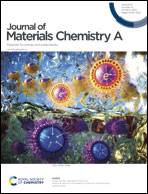Research progress in metal–organic frameworks (MOFs) in CO2 capture from post-combustion coal-fired flue gas: characteristics, preparation, modification and applications
Abstract
In response to the urgency of reducing CO2 emissions, nearly 200 countries have joined the “Paris Agreement”. It sets long-term low-carbon development goals, which aim to achieve carbon neutrality in the future. The combustion of fossil fuels, especially coal-fired power plants, is a major source of anthropogenic emissions of CO2 in the atmosphere. Capture and storage of CO2 (CCS) in post-combustion flue gas is considered to be a promising technology for achieving CO2 emission reduction. Metal–organic frameworks (MOFs) are a potential emerging high-performance CO2 capture material. This review was conducted based on most studies on CO2 capture of MOFs from post-combustion coal-fired flue gas mainly published in the past decade. The main content includes characteristics, preparation methods, modification methods, and application of MOFs for CO2 capture, and machine learning used in the development and screening of MOFs. The characteristics of MOFs with high CO2 capture performance and the best candidate MOFs under the conditions of the coal-fired flue gas are summarized. In each part, a general summary and prospects of the related studies are given. The goal of this review is to provide technical and theoretical guidance for the development and industrial application of high-performance MOF materials for CO2 capture in the post-combustion coal-fired flue gas.



 Please wait while we load your content...
Please wait while we load your content...